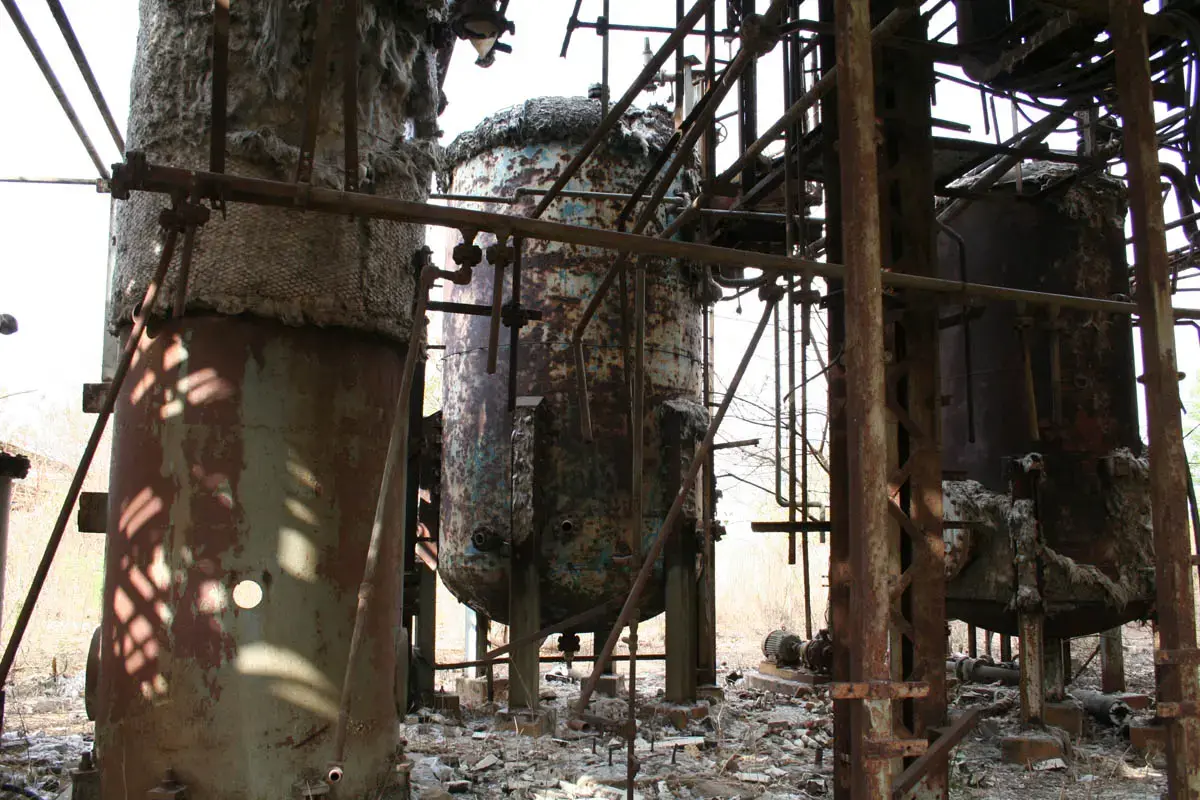Bhopal Tragedy 1984 – Remembering of the Endured Souls
The Bhopal Tragedy is regarded as the world’s worst industrial disaster, causing thousands of deaths and leaving long-term health and environmental consequences. On the night of December 2–3, 1984, a toxic gas leak from the Union Carbide India Limited (UCIL) pesticide plant in Bhopal, India, exposed over 500,000 people to the deadly chemical methyl isocyanate (MIC).
The catastrophe highlighted severe lapses in industrial safety and corporate accountability, leading to major global reforms in chemical safety regulations.

The Night of the Bhopal Tragedy
At approximately 12:30 AM on December 3, 1984, MIC gas began leaking from Tank 610 in the UCIL plant due to a chemical reaction triggered by water contamination. This resulted in an exothermic reaction, causing the tank’s temperature and pressure to rise uncontrollably.
Within minutes, around 40 tons of highly toxic MIC gas was released into the air over Bhopal, exposing residents to lethal levels of poison. Thousands suffocated to death within hours as they inhaled the toxic gas. The gas caused severe respiratory distress, blindness, vomiting, and burns.
The official immediate death toll was reported as 3,787, but estimates suggest that over 10,000 people died within the first few days. Over the years, the death toll exceeded 20,000, with more than 500,000 people suffering from chronic health conditions due to the Bhopal Tragedy.
What Causes the Bhopal Tragedy
Several preventable safety lapses led to this catastrophe. The lack of adequate safety measures played a crucial role in the extent of the damage. UCIL had disabled crucial safety systems, including the vent gas scrubber and flare tower, which could have minimized the gas leak.
The plant’s alarm system failed to function properly, delaying evacuation efforts. Negligence in plant maintenance further exacerbated the situation. The storage tank was poorly maintained, allowing water contamination that triggered the reaction. Safety training for workers was inadequate, leading to improper handling of hazardous chemicals.
Corporate cost-cutting measures were another significant factor. Union Carbide had reduced staff and maintenance budgets, prioritizing profits over safety. Critical safety protocols were either ignored or poorly enforced.
Long-Term Consequences
The disaster led to severe long-term consequences, particularly in terms of health effects. Even decades after the disaster, survivors continue to suffer from serious health problems, including chronic respiratory diseases such as asthma, lung fibrosis, and chronic obstructive pulmonary disease.
Many survivors also experience blindness and vision impairments, neurological disorders, and birth defects. The rates of cancer and immune system disorders have also increased among those exposed to the gas. The environmental impact of the disaster has been profound as well.
The soil and groundwater in Bhopal remain contaminated due to improper chemical disposal at the site. The abandoned Union Carbide plant remains a toxic hazard, with little effort toward decontamination.
Legal and Corporate Aftermath
The legal battles following the disaster have been lengthy and complex. In 1989, Union Carbide paid $470 million in compensation, which many survivors found inadequate. In 2010, an Indian court convicted seven UCIL officials of criminal negligence, sentencing them to two years in prison.
Dow Chemical, which acquired Union Carbide in 2001, denies liability and refuses further compensation claims. The disaster also led to regulatory reforms aimed at preventing similar catastrophes in the future.
The tragedy resulted in stricter global chemical safety regulations, including the Emergency Planning and Community Right-to-Know Act (EPCRA) in the United States. India enacted the Environment Protection Act (1986), strengthening laws on industrial safety.
Lessons Learned from Bhopal Tragedy
Robust Industrial Safety Measures Must be Established
The Bhopal Tragedy underscores the necessity for robust industrial safety measures, regulatory oversight, and worker education to prevent such disasters in the future. Governments and international regulatory bodies must ensure strict enforcement of industrial safety laws to avoid similar catastrophes.
Stricter inspections of hazardous facilities should be carried out regularly, ensuring companies comply with safety protocols. Legislation such as the Environment Protection Act in India and global chemical safety agreements must continue evolving to adapt to new industrial risks.
International bodies such as the United Nations and the International Labour Organization should take an active role in monitoring safety standards and enforcing penalties for non-compliance.
Corporates Must Prioritize Responsibilities Over Profit
Companies must recognize their ethical responsibility to prioritize safety over cost-cutting measures. Union Carbide’s neglect of essential maintenance and safety mechanisms serves as a cautionary tale for corporations worldwide.
Industries dealing with hazardous substances must establish stringent safety policies, train employees in emergency procedures, and maintain functional safety equipment. Workplace safety audits should be conducted frequently to identify and address potential hazards before they lead to disasters.
Workers Must be Empowered Through Consistent Safety Programs
Factory workers, who are often the first to detect safety lapses, must be empowered through comprehensive training programs. Employees should be educated on how to handle dangerous chemicals, operate safety mechanisms, and respond to industrial accidents effectively.
Whistleblower protection laws should be strengthened to encourage workers to report unsafe practices without fear of retaliation. Emergency preparedness drills should be conducted periodically to ensure workers and nearby communities can evacuate safely in the event of an accident.
Medical Facilities Upgrade in Much Needed Industrial Area
In addition to corporate responsibility, government agencies must invest in public health infrastructure to handle industrial disasters effectively. The lack of adequate medical facilities in Bhopal exacerbated the suffering of the victims.
Governments should establish industrial disaster response units equipped with medical supplies, decontamination resources, and trained personnel. The tragedy serves as a reminder that proactive safety measures, rather than reactive responses, are the key to preventing future industrial catastrophes.
Conclusion
The Bhopal Gas Tragedy was a man-made disaster fueled by corporate greed and inadequate safety measures. While reforms have been made, justice for the victims remains incomplete.
The site remains contaminated, and survivors continue to suffer without proper medical aid. Ensuring strict industrial safety standards and corporate accountability is essential to preventing similar tragedies in the future.
References
